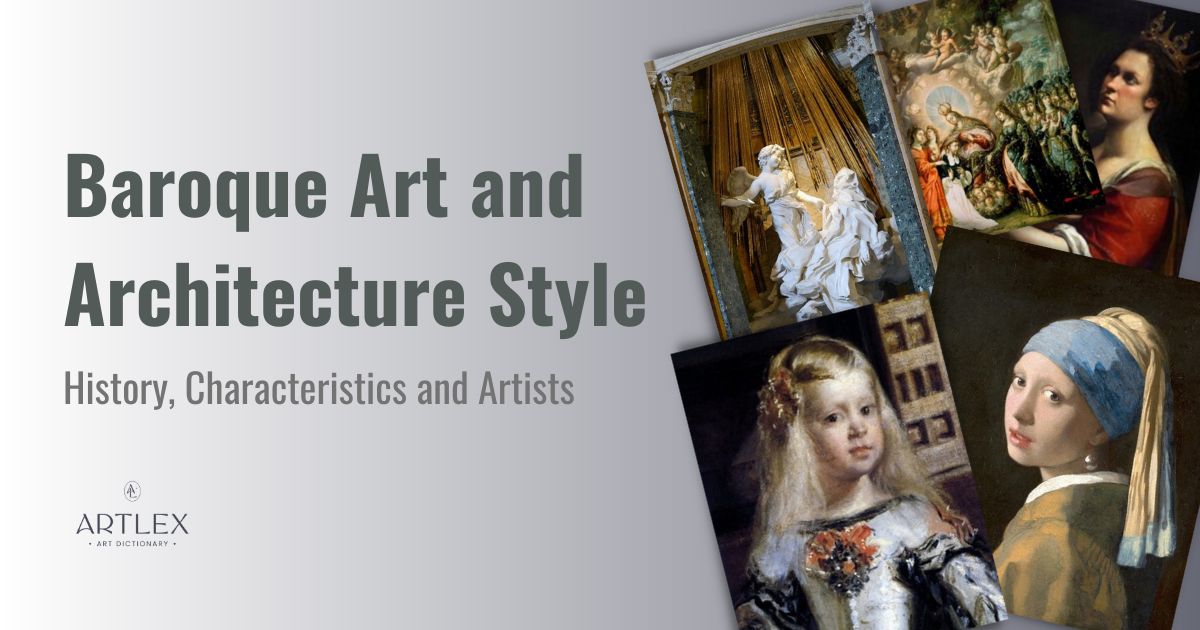What is Baroque Art?
The term Baroque art comes from the French word barroque which originally referred to irregularly shaped pearls. This period of early European art, following the Renaissance and Mannerist era, started in Rome during the early 17th century and spread throughout the continent. Evoking emotion, tension and drama, Baroque art is highly ornate encompassing painting, sculpture, decorative arts, and architecture.
Famous Works of Art from the Baroque Period
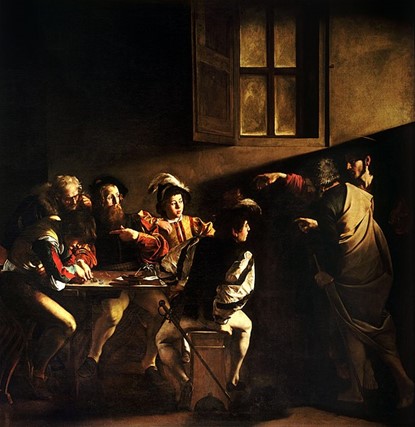
Accueil – Saint Louis des Français (saintlouis-rome.net)
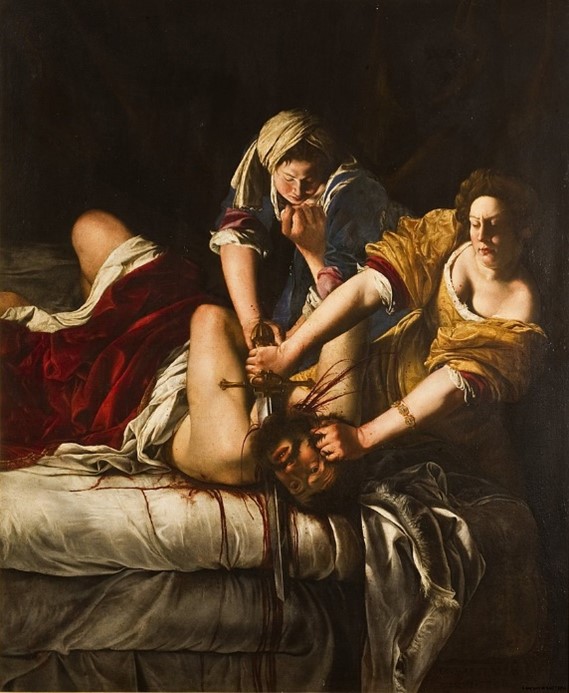
Judith Beheading Holofernes by Artemisia Gentileschi | Artworks | Uffizi Galleries
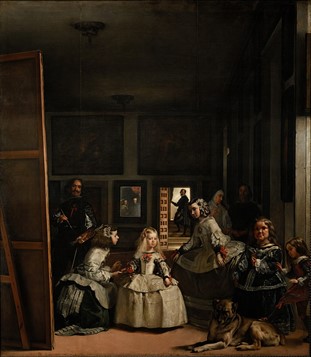
Las Meninas – The Collection – Museo Nacional del Prado (museodelprado.es)
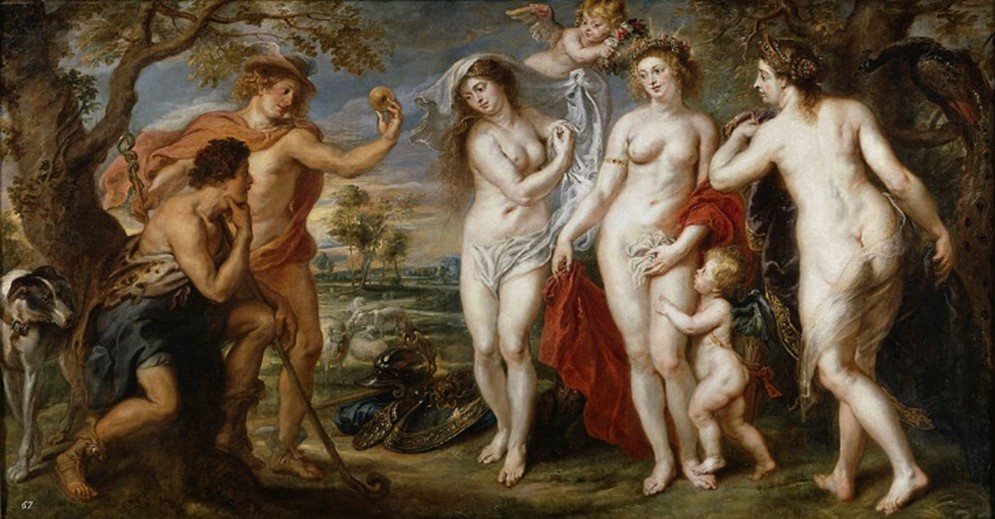
The Last Judgement of Paris.(1606-1608). Peter Paul Rubens. Museo Del Prado, Madrid, Spain.
The Judgement of Paris – The Collection – Museo Nacional del Prado (museodelprado.es)
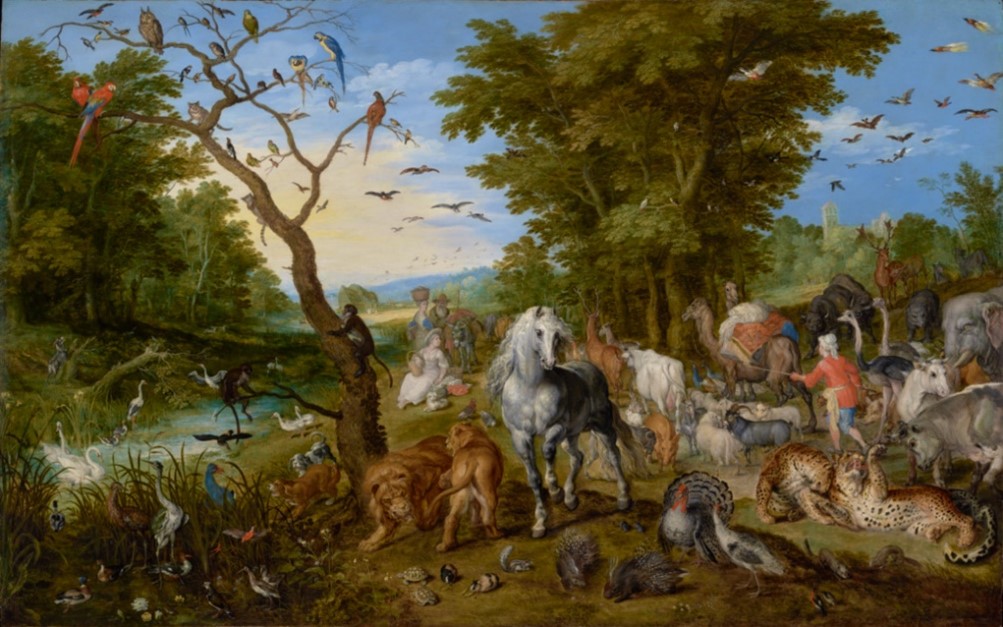
The Entry of the Animals into Noah’s Ark (Getty Museum)
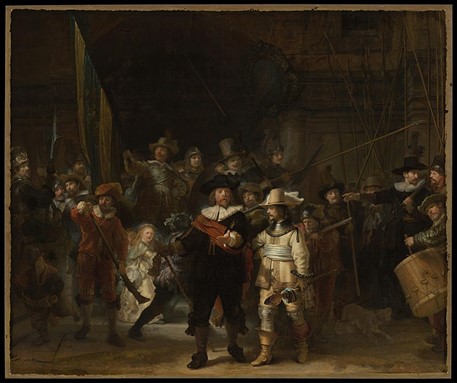
The Night Watch, Rembrandt van Rijn, 1642 – Rijksmuseum
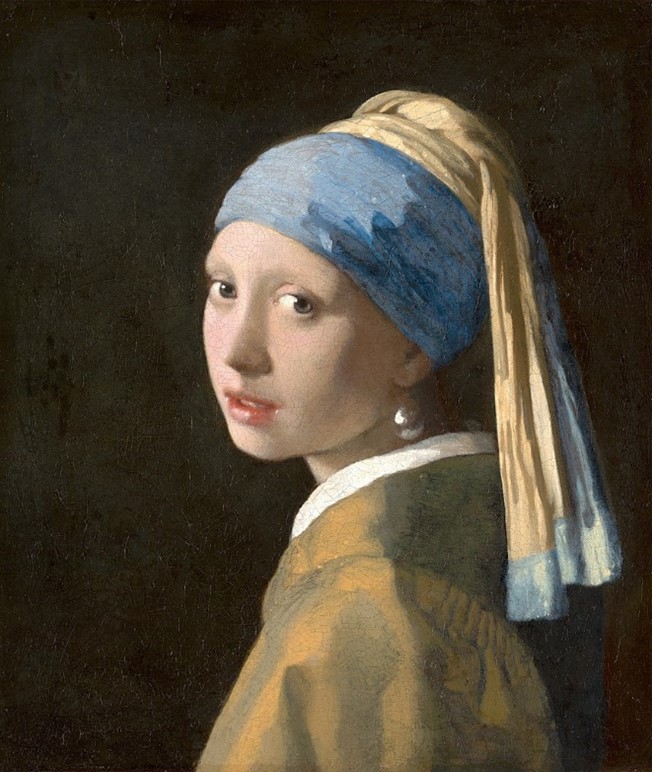
https://www.mauritshuis.nl/en/our-collection/artworks/670-girl-with-a-pearl-earring/
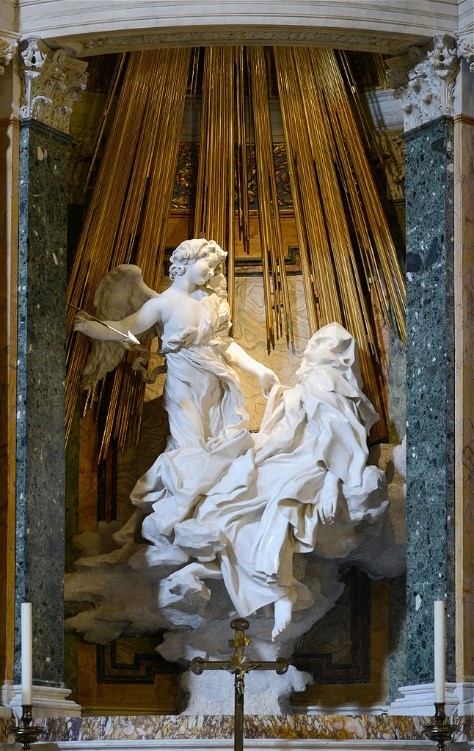
Historical Context of Baroque Art in the 17th Century
The Roman Catholic Church gained control over Southern Europe after the Catholic Counter Revolution in protest to the Protestant Reformation. To show this strength in power, new works were commissioned by the popes in both art and architecture.
Meanwhile, Northern Europe was mostly Protestant and relied on monarch patrons such as Louis XIV, and Charles I, as the Protestant churches did not utilize art in the same way as Catholic churches.
Scientist such as Galileo began to influence art, as well as astronomers like Copernicus.
Wealth was accumulating through trade in the Dutch Golden Age and patrons were in search of small Baroque paintings for their homes. Prints were also being mass produced for those with a new interest in art to entice future purchases of original Baroque paintings.
Characteristics of Baroque Paintings
Baroque paintings focused on biblical, mythological, and historical paintings as well as natural landscapes. There was an overall focus on the smallest of details. Works had a sense of emotion as well as the ability to capture dramatic moments.
A depth within painting was created with tenebrism, popularized by Caravaggio. Tenebrism is derived from the Italian word ‘tenebroso’ which means darkened and obscured. This allowed for figures to be shadowed, then dramatically illuminated through light.
Spanish and English monarchs commissioned portraits, while French Kings preferred classical landscape paintings.
Northern Baroque paintings for the homes of wealthy merchants were smaller and still life paintings were frequently requested.
Characteristics of Sculpture
Sculpture in-the-round was created in bronze and marble and often intended to adorn buildings and gardens.
Characteristics of Architecture
Large buildings that meant to impress were what Baroque architecture was known for. Architecture was swirling with broken pediments, Solomonic columns and domes. Reliefs appeared with intricate carvings.
The natural world was highlighted in interiors with twisting, flowering vines. Putto and cupids were added to décor. Wood was gilded and rich fabrics were used such as velvet and damask.
Early Baroque Painting
The Baroque period in art started in Rome. The most influential painter was Italian born Caravaggio.
Caravaggio
Known for depicting biblical and mythological scenes, Caravaggio (1571-1610) was an Early Baroque artist who captured drama at its climax. The Italian artist made religious figures accessible by showing them in contemporary clothing and settings.
In the Calling of St. Mathew (1600), Caravaggio illustrates the moment when Christ invites Mathew to join him. Mathew stares at Christ, who has just entered the dark tavern, illuminated through a sunlit window, in disbelief.
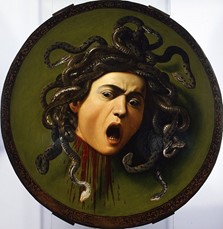
The Italian painter’s scenes could also be full of violence. In David with the Head of Goliath(1699), Caravaggio paints the severed head moments after the occurrence. Medusa (1597) painted on a parade shield was commissioned by Cardinal del Monte as a gift by the Duke of Tuscany, Ferdinand I de’ Medici, Only Medusa’s head and anguished face appear. The neck has been savagely decapitated.
Female Italian Baroque Painters
Two female Italian painters gained fame in Baroque era. Artemisia Gentileschi (1593 – 1656) and Elisabetta Sirani (1638-1665).
Gentileschi painted women in a realistic way, but like Caravaggio her paintings could also have a violent nature. Judith and Holofernes (1620-1621) a biblical story, was popular with artists in the Baroque era. Here the painter illustrates Judith severing the head of the drunken Holofernes, as blood soaks white sheets. This is like Caravaggio’s Judith Beheading Holofernes (1598-99), but Gentileschi’s Judith does not hesitate, as she is more muscular and powerful.
Conversely, her religious art portrait Saint Catherine of Alexandria 1615, portrays a regal, gentle woman, in contemplation.
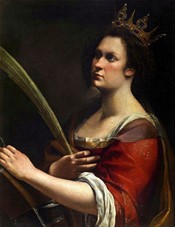
Italian painter Elisabetta Sirani was known not only for her religious themes, but for heroines from literature and history. In Portia Wounding Her Thigh (1664) the heroine is depicted jabbing her naked thigh with a dagger, to prove to her husband Brutus that she is fearless enough to join him in his conspiracy to murder Julius Caesar.
One curious element of Sirani’s works is she would hide her signature in obscure places like the embellishments of her character’s wardrobe.
More Southern Baroque Painters: Spain
Seville born artist Diego Velázquez (1599-1660) was a court painter to King Philip IV. The artist’s masterpiece work Las Meninas (1656) is a Southern Baroque period painting that was commissioned as a family portrait. With full artistic license, the artist adds his own image into the work.
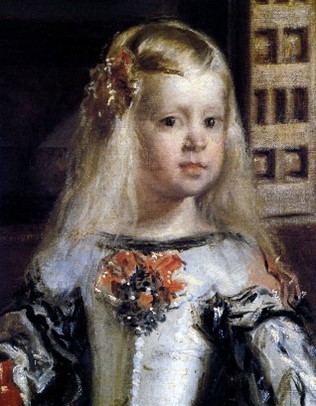
The Infanta Margarita of Spain, is with her meninas or attendants. Behind her, reflected only in the mirror are the king and queen. Caravaggio’s influence is apparent through the Spanish painter’s use of tenebrism. Faces and hands appear to be illuminated.
Francisco de Zurbarán (1598-1664) was the leading painter in Seville, after Velázquez left for the court in Madrid. He was nicknamed the Spanish Caravaggio for his use of tenebrism. Zurbarán frequently painted religious scenes capturing the subject’s spirituality, as with Christ nailed to the cross in Crucifixion (1627), the young friar in Saint Serapion (1628) or Saint Francis Contemplating the Skull (1633-1635).
In 1634, Zurbarán was invited by King Philip IV to paint mythological works such as Hercules Staying the Course of the River Alpheus, part of a larger series.
New Spanish Baroque Painting
New Spanish Baroque, often referred to as Mexican Baroque was art in the Viceroyalty of Spain. As a Catholic dominated region, much of the art was religious. Works were painted on altarpieces, canvasses, and church walls.
Popular artists at the time included Miguel Cabrera (1695-1768) who was recognized as the greatest painter in New Spain, Juan Correa (1646-1716) and Cristóbal de Villalpando (1649 – 20 August 1714) prolific painters whose work now hang in many churches in Mexico.
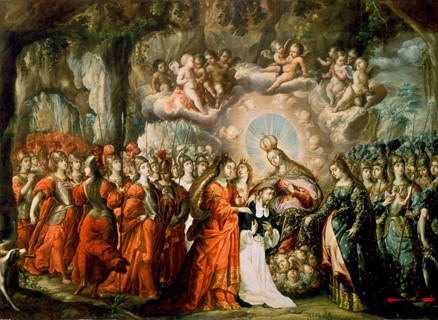
Flemish Baroque Painters
Peter Paul Rubens (1577-1640) was schooled in Antwerp, before completing his training in Italy. He spent almost a decade in Spain, then became court painter to Archduke Albert and Archduchess Isabella, in the southern Netherlands. His paintings in the Baroque style include religious works like Samson and Delilah (1609-10) and mythological themed subjects such as The Last Judgement of Paris (1606-1608) as well as portraits and landscapes.
In The Education of the Princess (1622-1625) Peter Paul Rubens combines a portrait of Marie de’ Medici with the mythological gods and goddesses, Apollo, Hermes, and Athena, instructing her on how to be a good queen. It is one of the 21 huge canvasses the queen mother of France commissioned the artist to paint to tell the history of her life.
Jan Brueghel the Elder (1568-1625) was known for his delicate brushwork, as shown in his biblical, mythological, historical and landscape scenes. Born in Belgium, he worked in Rome before becoming the court painter to Archduke Albert and Archduchess Isabella, in the southern Netherlands.
In The Entry of the Animals into Noah’s Ark (1634) There is detail in every animal from horses and lions down to the smallest birds and turtles in the grass along the banks of the river.
Created in the 1640s Allegory of War, by Jan Brueghel the Younger (1601-1678) son of Jan Brueghel the Elder, shows the effects of Europe’s Thirty Years War, where over eight million people were killed. The Flemish Baroque artists paints dead bodies, skulls, weaponry, and savage animals into the landscape.
Dutch Baroque Painters
Rembrandt van Rijn (1606-1669) was a Dutch Baroque painter and print maker. His work captured realistic images and moods, much of which were historical or biblical. He also created portraits and self portraits. Some of the works the Baroque artist is most famous for are The Anatomy Lesson of Dr. Nicolaes Tulp (1632) depicting the famous doctor examining the corpse of an executed criminal and Rembrandt’s masterpiece is The Nightwatch (1642) a large canvas that is a group portrait of military men.
Anthony Van Dyck (1599- 1641) Peter Paul Rubens’ best pupil was a successful painter of portraits and religious scenes. He was court painter to King Charles I of England, for whom he painted the Equestrian Portrait of Charles I (1637-38). He painted Self Portrait with Sunflower (1633) in which he gazes out of the canvas toward the viewer.
Johannes Vermeer (1632-1676) the Dutch born painter created 34 works in his career, the most famous of which is The Girl with a Pearl Earring (1665). Vermeer was known for his ability to master light and to capture scenes from everyday life.
A detailed Late Baroque painting by Dutch artist Rachel Ruysch (1664-1750) entitled Fruits and Insects (1711) illustrates the fascination with science and nature in still life Baroque paintings.
French Baroque Painters
Nicolas Poisson (1637-1710) was born in France but lived much of his life in Rome. He created perfect landscapes and illustrated the connection of the people to the land. Some of his major works included Death of Germanicus (1628), The Inspiration of the Poet (1629), Venus and Adonis (1628)
Italian Baroque Sculptors and Architectures
Gian Lorenzo Bernini (1598-1680) was a sculptor and architect during the Baroque period. Sculpture was a lifelong study beginning at the side of his father Pietro, who was also an artist. Bernini was devoutly religious, and this was reflected in his work.
Francesco Borromini (1599-1667) defined Baroque style in the 17th century and represented form in a very geometric way by using overlapping squares, rectangles, and circles.
Bernini and Baroque Style
Bernini was a master in marble, where he captured both human emotion and sensuality of line. His sculpture-in-the-round works allowed for his work to be studied from all angles.
Bernini’s early patron was Cardinal Scipioni Borghese who commissioned two important works. Both were from Ovid’s Metamorphosis. Pluto and Proserpine (1621-1622) depicts Pluto abducting the goddess while she twists away in horror. In Apollo and Daphne (1622-1625) the Baroque artist captures the exact moment when Daphne begs her father to transform her into a laurel tree to avoid Apollo’s advances.
Bernini received a large commission from Cardinal Frederigo Cornoro between 1647-1652. First, he extended Cornoro Chapel, at the church of Santa Maria della Vittoria, in Rome. The Ecstasy of St. Teresa was sculpted for this space, as interpreted in the saint’s diary. The angel descends and pierces her heart with a spear. On either side of the work, Bernini sculpted two balconies with people as onlookers who represent various Cardinals.
Bernini was commissioned for multiple projects in St. Peter’s Basilica such as the bronze canopy or baldacchino that rises 95 feet, with twisting Solomonic columns, and St. Peter’s chair also in bronze, surrounded by angels and cherubs, as well as numerous sculptures and tombs. Then directly outside there is St. Peter’s Piazza, an oval space with an obelisk in the center and two fountains, along with a colonnade and a multitude of sculpted saints.
Borromini and Baroque Style
Francesco Borromini’s San Carlo alle Quattro Fontane or Saint Charles of the Four Fountains (1638-1646) in Rome, Italy is made of stone and stucco. The materials chosen reflects the meager budget that the order of the monks who commissioned it had available. Additionally, the land it was built on was small and irregular in shape.
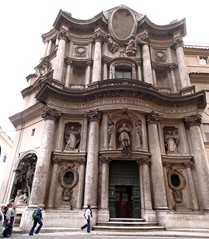
The church was designed using geometric shapes and mathematical precision. The floorplan is built upon two triangles that connect in the middle to form a diamond. Within each triangle, overlapping circles connect to make an oval, with an oval ceiling above. Wall curve and alternate between the concave and convex. More geometric elements as well as floral motifs add to the design, simply mastered in white. San Carlo alle Quattro Fontane is a gem of Baroque style.
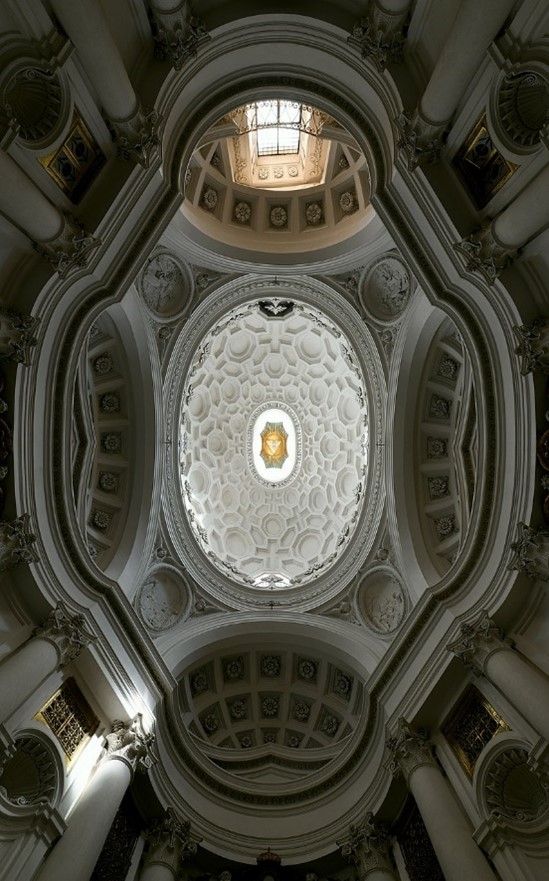
Other Notable Baroque Architecture
In France, Napoleon Bonaparte commissioned Les Invalides (1671-1706) a hospital and retirement home for veterans and a final resting place for the ruler’s grave. Architect Libéral Bruant (1635 -1697) built most of it and Jules Hardouin-Mansart (1646-1708 ) completed the dome.
The Palace of Versailles, in France, was once a hunting lodge owned by Louis XIII. It was transformed into a masterpiece of Baroque architecture and design by his son Louis XIV, starting in 1669. With over 2300 rooms, it was lavishly constructed and designed using gilding, stucco arabesques, painted vaults and trompe-l’oeil. The first architect on the project was Louis La Vau (1612-1670). It was later completed by Hardouin-Mansart.
St. Paul’s Cathedral, in London, is an example of English Baroque architecture, designed by architect Christopher Wren (1632-1723) after the damage of the Great Fire of 1666. Wren would also rebuild over 50 churches caught in the blaze.
Related Art Terms
- Dutch Golden Age
- Tenebrism
- Still life
- Sculpture in-the-round
- Broken pediments
- Solomonic columns
- Putti
- Putto
- Domes
- Reliefs
- Baldacchino
- Renaissance Art
- Mannerism (Art)
Artists and Architects of the Baroque Era
- Caravaggio (1571-1610) Italian
- Artemisia Gentileschi (1593 – 1656) Italian
- Elisabetta Sirani (1638-1665) Italian
- Diego Velázquez (1599-1660) Spanish
- Francisco de Zurbarán (1598-1664) Spanish
- Miguel Cabrera (1695-1768) Mexican
- Juan Correa (1646-1716) Mexican
- Cristóbal de Villalpando (1649 – 1714) Mexican
- Peter Paul Rubens (1577-1640) Flemish
- Jan Brueghel the Elder (1568-1625) Flemish
- Jan Brueghel the Younger (1601-1678) Flemish
- Rembrandt van Rijn (1606-1669)
- Anthony Van Dyck (1599- 1641)
- Johannes Vermeer (1632-1676)
- Rachel Ruysch (1664-1750)
- Nicolas Poisson (1637-1710)
- Gian Lorenzo Bernini (1598-1680)
- Francesco Borromini (1599-1667)
- Libéral Bruant (1635 -1697)
- Jules Hardouin-Mansart (1646-1708 )
- Louis La Vau (1612-1670)
- Christopher Wren (1632-1723)

